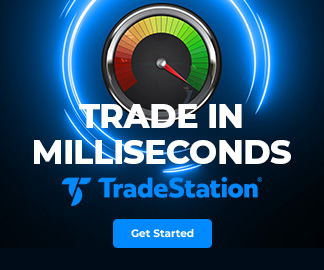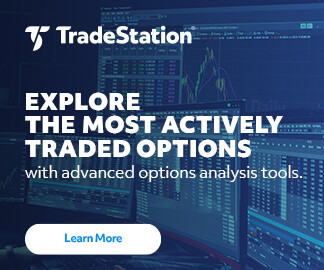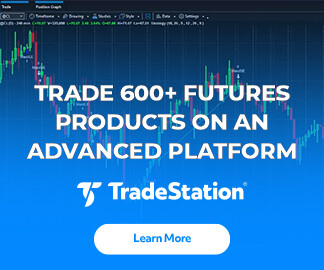
Thousands of symbols in the stock market have calls and puts. However not all stocks and ETFs are equal in the eyes of options traders.
Some names have incredibly active options, with hundreds of thousands of transactions per day. Others barely trade at all, even if they’re large or well-known companies.
Focusing on volume is a useful way to find the top stocks for options trading. After all, symbols with more transactions are more liquid. They tend to have tighter bid / ask spreads, lowering transaction costs. That can also make it easier to use complex options strategies like vertical spreads with multiple legs.
The list below includes some major stocks and exchange-traded funds (ETFs) with heavy options volume. It ranks symbols by their average daily call and put volume over the last month. (TradeStation’s Scanner app provided the data.)
Some symbols always rank near the top of the volume list, while others enter and exit.
SPDR S&P 500 ETF (SPY) is usually the most actively traded symbol in the entire market. It tracks the S&P 500 index. The Invesco QQQ Trust (QQQ) follows the Nasdaq-100. Traders can use either to position for upside or downside in the broader market.
Individual stocks like Apple (AAPL) and Tesla (TSLA) are typically on the list because of their size and popularity. Others enter and exit based on trading activity and events.
Most Active Options
| Company | Avg Options Volume | Business |
| SPDR S&P 500 ETF (SPY) | 7.9 million | Tracks the S&P 500 |
| Invesco QQQ Trust (QQQ) | 3.7 million | Tracks the Nasdaq-100 |
| Tesla (TSLA) | 3.4 million | Electric cars |
| Nvidia (NVDA) | 3.4 million | Semiconductors |
| Apple (AAPL) | 1.3 million | iPhones, computers |
| iShares Russell 2000 (IWM) | 1.2 million | Tracks the Russell 2000 |
| Advanced Micro Devices (AMD) | 988,400 | Semiconductors |
| Alphabet (GOOGL) | 483,500 | Internet |
| Amazon.com (AMZN) | 471,000 | E-commerce |
| Palantir (PLTR) | 440,300 | Software |
What Are Options?
Options are derivatives tracking movement in underlying stocks and ETFs.
Call options give owners the right to buy shares at a certain level by a certain date (expiration). As a result, they tend to gain value when prices rise. Bullish traders may own calls instead of buying stock. Another common strategy is selling them against long-equity positions, which is known as a covered call.
Put options give owners the right to sell shares at a certain level by the expiration date. They tend to gain value when prices decline. Bearish traders may own puts instead of shorting stock. They can also use them as protection to hedge long positions.
Traders can combine options in vertical spreads to leverage moves between two levels. These lower upfront costs by selling one contract to help pay for another.
Options can potentially benefit from market volatility. Because calls and puts fix buying and selling prices, they can be worth more when underlying values change quickly. Traders can position for changes in volatility with strategies like straddles and strangles.
It’s important to remember that options are complex instruments that typically expire worthless. They may not be suited for all investors.
Exchange Traded Funds (“ETFs”) are subject to management fees and other expenses. Before making investment decisions, investors should carefully read information found in the prospectus or summary prospectus, if available, including investment objectives, risks, charges, and expenses. Click here to find the prospectus.

















